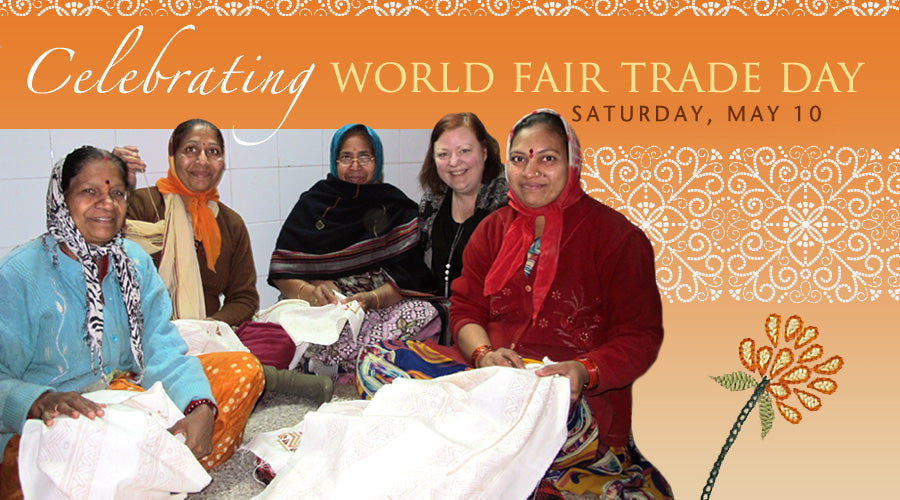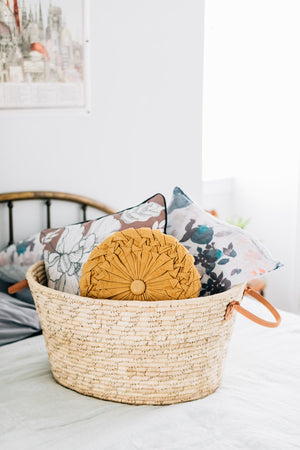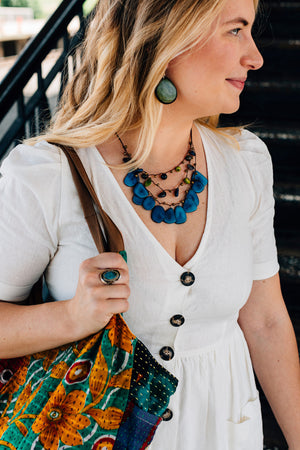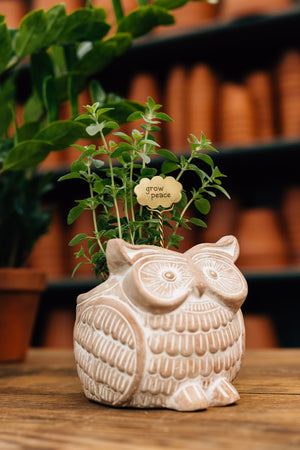
Handmade Connections—Celebrating World Fair Trade Day
Handicrafts and the formation of North American fair trade
By Renee Bowers, executive director of the Fair Trade Federation
Trading of ethically produced handmade goods is based on an idea that sits at the heart of fair trade: relationships matter. The connection-based structure of fair trade developed from the work of a few innovators who had a vision to alleviate poverty through the sale of traditional crafts. At this vision’s core was (and still is) the idea that trade should involve a true partnership between buyer and seller—one that empowers producers, builds their capacity to do business, and improves the quality of life for their communities.
A history of relationship building
Many say the fair trade movement began in 1946 when Edna Ruth Byler, a volunteer for the Mennonite Central Committee, visited a sewing class in Puerto Rico. She discovered that despite the hard work of the local women, and their extraordinary talent for producing handmade lace and other fabrics, they still lived in tremendous poverty.
Byler had the idea to carry these pieces back to the United States and sell them to American shoppers, returning the profits directly to the women producers. Her work eventually became more structured and led to the formation of Self Help Crafts. The organization, now known as Ten Thousand Villages, opened its first fair trade shop in 1958—eventually expanding into Canada in the 1960s—and is now the largest fair trade retailer in North America.
In 1949, another organization, Sales Exchange for Refugee Rehabilitation and Vocation, or SERRV International, formed based on the efforts of Church of the Brethren relief volunteers working in postwar Germany. The volunteers returned to the United States with refugee-produced crafts, which they hoped to sell for earnings to give back to refugees.
Today, the pioneering organizations Ten Thousand Villages and SERRV International are joined by many other fair traders who share their commitment to providing economic opportunity to small-scale craftspeople and farmers in the global south.
Why it works
These early pioneers referred to themselves as “alternative trade organizations”—a name that reflects the ethos of creating truly unique trading relationships. It has always been about first considering the needs of people and communities, a priority often overlooked in conventional trading relationships.
As global trade has become more competitive, outsourcing from global brands has led to a “race to the bottom” in which companies seek the cheapest and fastest means of production.
In this context, dedicated fair trade organizations have a new role to play. Fair trade is seen as a way to lift artisans out of poverty while celebrating their traditional handmade items. At the same time, the partnerships based on fair trade provide workers with the resources to turn their work into viable businesses.
By advocating for direct relationships with small-scale producers and shorter supply chains, dedicated fair traders provide an alternative to the hidden abuses that so often take place in a globalized world. This dedicated fair model also provides an alternative to large scale, industrialized agriculture and the hazards that result.
The innovative formation and subsequent growth of the handicrafts movement served as the foundation for the holistic approach taken by dedicated fair traders today. The Fair Trade Federation has approximately 250 members in the United States and Canada, while the World Fair Trade Organization has approximately 400 members worldwide—each demonstrating a full commitment to the fair trade model.
The Fair Trade Federation uses its nine principles of fair trade as an overarching framework for its members and other fair traders:
• Create opportunities for economically and socially marginalized producers
• Develop transparent and accountable relationships
• Build capacity
• Promote fair trade
• Pay promptly and fairly
• Support safe and empowering working conditions
• Ensure the rights of children
• Cultivate environmental stewardship
• Respect cultural identity
To find FTF members in the United States and Canada, visit FairTradeFederation.org










Leave a comment